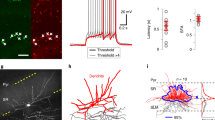Abstract
The retrosplenial cortex consists of areas 29a–d, each of which has different connections with other cortical and subcortical regions. Although these areas also make complex interconnections that constitute part of a neural circuit subserving various functions, such as spatial memory and navigation, the details of such interconnections have not been studied comprehensively. In the study reported here, we investigated the organization of associational and commissural connections of areas 29a–d within the retrosplenial cortex in the rat, using the retrograde tracer cholera toxin B subunit and anterograde tracer biotinylated dextran amine. The results demonstrated that each of these areas has a distinct set of interconnections within the retrosplenial cortex. Each area interconnects strongly along the transverse axis of the retrosplenial cortex: area 29a, area 29b, caudal area 29c, and caudal area 29d connect with each other, and rostral area 29c and rostral area 29d connect with each other. In the longitudinal direction, rostral-to-caudal projections from rostral areas 29c and 29d to areas 29a and 29b and caudal areas 29c and 29d are strong, whereas reciprocal caudal-to-rostral projections are relatively weak. Although most of the intrinsic connections are homotopical, contralateral connections are weaker and less extensive than ipsilateral connections. These findings suggest that each retrosplenial area may not only process specific information somewhat independently but that it may also integrate and transmit such information through intrinsic connections to other areas in order to achieve retrosplenial cortical functions, such as spatial memory and learning.








Similar content being viewed by others
Abbreviations
- CA:
-
Cornu ammonis
- Caud:
-
Caudal
- cc:
-
Corpus callosum
- Contra:
-
Contralateral
- c29a:
-
Caudal part of area 29a
- c29b:
-
Caudal part of area 29b
- c29c:
-
Caudal part of area 29c
- c29d:
-
Caudal part of area 29d
- Ipsi:
-
Ipsilateral
- m29c:
-
Mid-rostrocaudal part of area 29c
- Pre:
-
Presubiculum
- Rost:
-
Rostral
- r29a:
-
Rostral part of area 29a
- r29b:
-
Rostral part of area 29b
- r29c:
-
Rostral part of area 29c
- r29d:
-
Rostral part of area 29d
- scc:
-
Splenium of the corpus callosum
- Sub:
-
Subiculum
- 29a:
-
Area 29a
- 29b:
-
Area 29b
- 29c:
-
Area 29c
- 29d:
-
Area 29d
References
Bannerman DM, Grubb M, Deacon RMJ, Yee BK, Feldon J, Rawlins JNP (2003) Ventral hippocampal lesions affect anxiety but not spatial learning. Behav Brain Res 139:197–213
Brandt HM, Apkarian AV (1992) Biotin-dextran: a sensitive anterograde tracer for neuroanatomic studies in rat and monkey. J Neurosci Method 45:35–40
Jones BF, Groenewegen HJ, Witter MP (2005) Intrinsic connections of the cingulate cortex in the rat suggest the existence of multiple functionally segregated networks. Neuroscience 133:193–207
Lukoyanov NV, Lukoyanova EA (2006) Retrosplenial cortex lesions impair aquisition of active avoidance while sparing fear-based emotional memory. Behav Brain Res 173:229–236
Mizumori SJY, Cooper BG, Leutgeb S, Pratt WE (2000) A neural systems analysis of adaptive navigation. Mol Neurobiol 21:57–82
Paxinos G, Watson C (1997) The rat brain in stereotaxic coordinates. Academic Press, San Diego
Shibata H (1993) Efferent projections from the anterior thalamic nuclei to the cingulate cortex in the rat. J Comp Neurol 330:533–542
Shibata H (1994) Terminal distribution of projections from the retrosplenial area to the retrohippocampal region in the rat, as studied by anterograde transport of biotinylated dextran amine. Neurosci Res 20:331–336
Shibata H (1998) Organization of projections from rat retrosplenial cortex to the anterior thalamic nuclei in the rat. Eur J Neurosci 10:3210–3219
Shibata H (2000) Organization of retrosplenial cortical projections to the laterodorsal thalamic nucleus in the rat. Neurosci Res 38:303–311
Shibata H, Naito J (2005) Organization of anterior cingulate and frontal cortical projections to the anterior and laterodorsal thalamic nuclei in the rat. Brain Res 1059:93–103
Shibata H, Naito J (2008) Organization of anterior cingulate and frontal cortical projections to the retrosplenial cortex in the rat. J Comp Neurol 506:30–45
Shibata H, Kondo S, Naito J (2004) Organization of retrosplenial cortical projections to the anterior cingulate, motor, and prefrontal cortices in the rat. Neurosci Res 49:1–11
Van Groen T, Wyss JM (1990) Connections of the retrosplenial granular a cortex in the rat. J Comp Neurol 300:593–606
Van Groen T, Wyss JM (1992) Connections of the retrosplenial dysgranular cortex in the rat. J Comp Neurol 315:200–216
Van Groen T, Wyss JM (2003) Connections of the retrosplenial granular b cortex in the rat. J Comp Neurol 463:249–263
Van Groen T, Vogt BA, Wyss JM (1993) Interconnections between the thalamus and retrosplenial cortex. In: Vogt BA, Gabriel M (eds) Neurobiology of cingulate cortex and limbic thalamus. Birkhäuser, Boston, pp 123–150
Van Groen T, Kadish I, Wyss JM (2004) Retrosplenial cortex lesions of area Rgb (but not of area Rga) impair spatial learning and memory in the rat. Behav Brain Res 154:483–491
Vann SD, Aggleton JP (2002) Extensive cytotoxic lesions of the rat retrosplenial cortex reveal consistent deficits on tasks that tax allocentric spatial memory. Behav Neurosci 116:85–94
Vann SD, Aggleton JP (2004) Testing the importance of the retrosplenial guidance system: effects of different sized retrosplenial cortex lesions on heading direction and spatial working memory. Behav Brain Res 155:97–108
Vann SD, Aggleton JP (2005) Selective dysgranular retrosplenial cortex lesions in rats disrupt allocentric performance of the radial-arm maze task. Behav Neurosci 119:1682–1686
Vogt BA, Peters A (1981) Form and distribution of neurons in rat cingulate cortex: areas 32, 24, and 29. J Comp Neurol 195:603–625
Wyss JM, Van Groen T (1992) Connections between the retrosplenial cortex and the hippocampal formation in the rat: a review. Hippocampus 2:1–12
Author information
Authors and Affiliations
Corresponding author
Rights and permissions
About this article
Cite this article
Shibata, H., Honda, Y., Sasaki, H. et al. Organization of intrinsic connections of the retrosplenial cortex in the rat. Anat Sci Int 84, 280–292 (2009). https://doi.org/10.1007/s12565-009-0035-0
Received:
Accepted:
Published:
Issue Date:
DOI: https://doi.org/10.1007/s12565-009-0035-0




